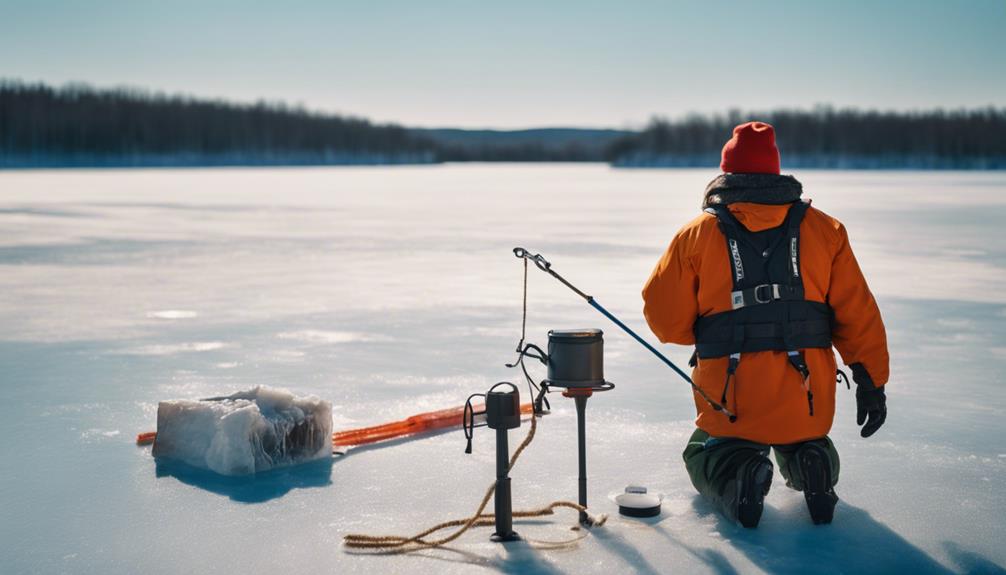Flying fish are not just a whimsical part of ocean lore; they are remarkable creatures that have adapted to escape predators by gliding above the water’s surface. In this blog post, we will dive into the intriguing characteristics, habitats, and behaviors of flying fish. Through this exploration, you will gain a deeper understanding of these unique marine animals and their place in the aquatic ecosystem.
What Are Flying Fish? Unveiling Their Unique Characteristics
Flying fish, belonging to the family Exocoetidae, are known for their incredible ability to glide gracefully through the air. These fish can be identified by their elongated bodies and large, wing-like pectoral fins. Some species can glide for over 200 meters, reaching heights of up to 1.5 meters above the water. Their specialized fins enable them to take off at high speeds, making them a fascinating subject for marine biology enthusiasts. With over 70 species of flying fish identified, they vary in size and color, but they all share the common trait of gliding as a survival technique.
The Anatomy of a Flying Fish: How They Achieve Flight
The anatomy of flying fish is uniquely adapted for their aerial escapades. Their streamlined bodies reduce water resistance, while their large pectoral fins act as wings. Additionally, flying fish have a specialized tail that provides the necessary thrust to propel them out of the water. Once airborne, they can extend their pelvic fins, which further aids in gliding. The mechanics of their flight are not just for show; these adaptations allow them to evade predators such as tuna, swordfish, and seabirds. This evolutionary trait has made flying fish a compelling study for researchers interested in biomechanics and adaptation.
The Natural Habitat of Flying Fish: Where They Thrive
Flying fish are predominantly found in warm ocean waters, particularly in the Atlantic, Pacific, and Indian Oceans. They prefer areas with a rich supply of plankton and small fish, as these are their primary food sources. Flying fish are often spotted near the surface of the water, where they can easily take off into the air. The Sargasso Sea, known for its floating seaweed, is a prime habitat for many flying fish species. The unique ecosystem of this region offers both protection and sustenance, illustrating the importance of environmental factors in the survival of these fascinating creatures.
Flying Fish Behavior: Understanding Their Social Interactions
Flying fish are social creatures that often travel in schools. This behavior not only enhances their chances of survival through collective evasion but also facilitates mating rituals. During breeding season, males will often leap out of the water, displaying their fins to attract females. The social dynamics within schools help to create a complex hierarchy, which can influence feeding and breeding patterns. Understanding these interactions provides insight into the social structure of flying fish and their strategies for thriving in a competitive marine environment.
The Diet of Flying Fish: What Do They Eat?
Flying fish primarily feed on plankton, small crustaceans, and tiny fish. Their diet varies depending on the availability of food sources in their habitat. They are opportunistic feeders, and their foraging behavior often involves darting through schools of plankton. The ability to jump out of the water to catch prey is another adaptation that aids in their survival. By understanding the dietary needs of flying fish, we can appreciate their role in the marine food web and the ecological balance of their habitats.
The Importance of Flying Fish in Marine Ecosystems
Flying fish play a crucial role in the marine ecosystem. As prey for larger fish and seabirds, they contribute to the food web and help maintain the balance of marine life. Additionally, by feeding on plankton, they help regulate these populations, ensuring that the ocean remains healthy. The presence of flying fish can be an indicator of a thriving marine environment, making their conservation vital. Understanding their ecological importance highlights the need to protect their habitats from pollution and overfishing.
Human Interaction with Flying Fish: Cultural and Economic Significance
Flying fish have cultural significance in many coastal communities, particularly in regions such as the Caribbean and the Pacific Islands. They are often featured in local folklore and art. Additionally, flying fish are commercially harvested in some areas, providing a source of income for fishermen. The demand for flying fish as a delicacy, particularly in Asian cuisine, has led to sustainable fishing practices to prevent overexploitation. Understanding the human-flying fish relationship emphasizes the importance of sustainable practices to protect these unique creatures for future generations.
Conservation Efforts for Flying Fish: Protecting Their Future
As with many marine species, flying fish face threats from habitat destruction, climate change, and overfishing. Conservation efforts are essential to ensure their survival. Initiatives to protect marine habitats, promote sustainable fishing practices, and raise awareness about the ecological significance of flying fish are crucial. Organizations dedicated to marine conservation are working to monitor flying fish populations and advocate for policies that protect their habitats. By supporting these efforts, we can contribute to the preservation of flying fish and the health of our oceans.
Conclusion: Embracing the Wonders of Flying Fish
Flying fish are an extraordinary example of nature’s ingenuity, showcasing adaptations that allow them to thrive in their aquatic environments. From their unique anatomy to their role in the marine ecosystem, flying fish captivate the imagination and inspire conservation efforts. By understanding these remarkable creatures and the challenges they face, we can play a part in ensuring their survival for future generations. Whether you’re a marine biology enthusiast or simply curious about the wonders of the ocean, the world of flying fish is one worth exploring.
In conclusion, flying fish are not just a spectacle to behold; they are an integral part of the marine ecosystem. By appreciating their unique traits and the challenges they face, we become advocates for their conservation and the health of our oceans.
